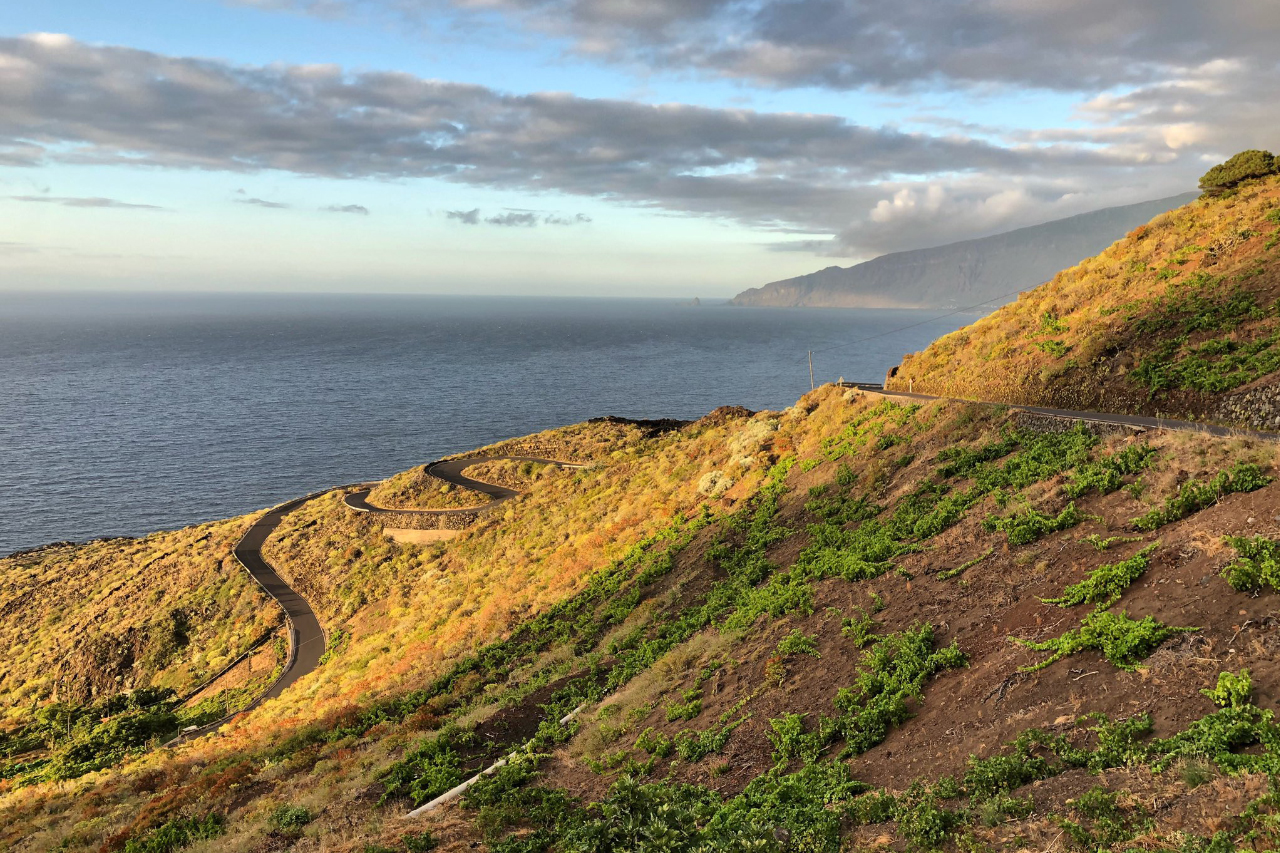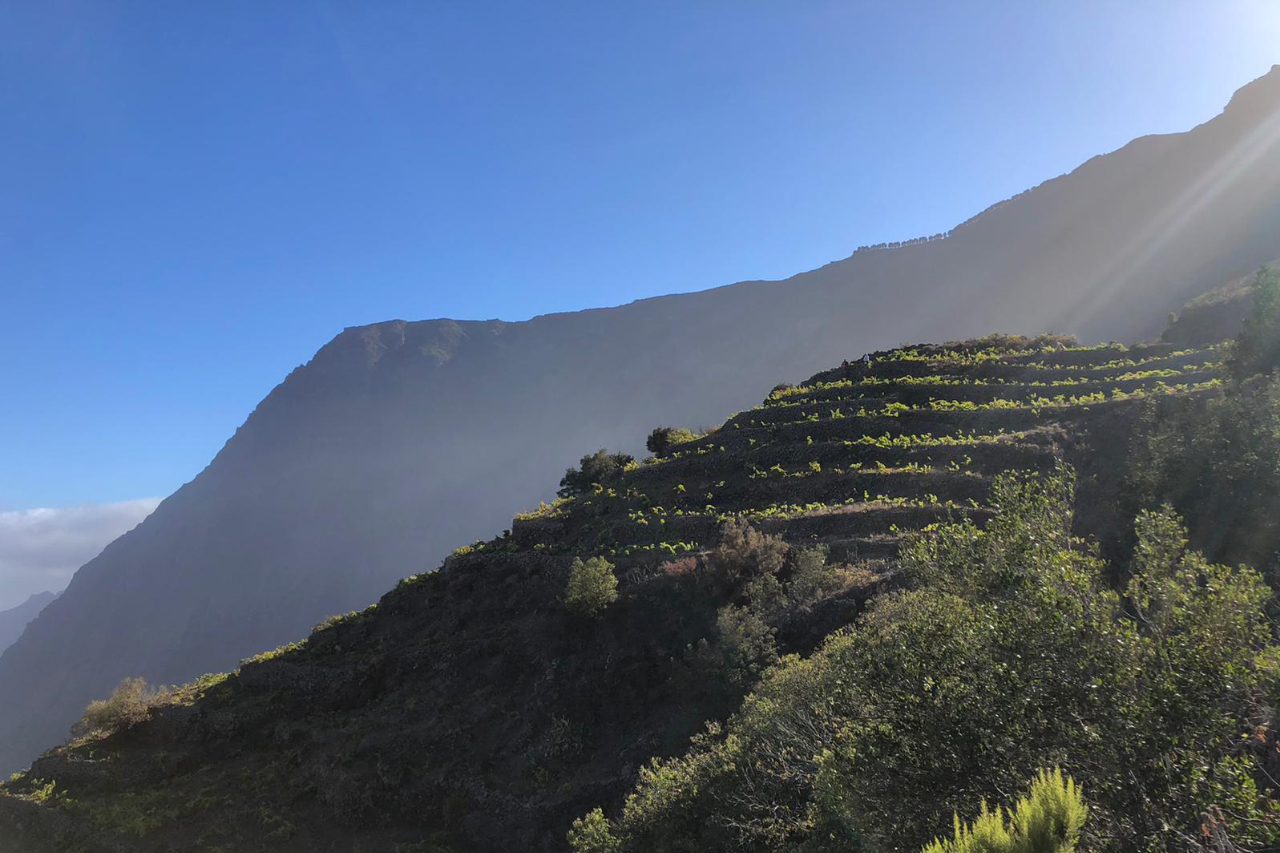

El Hierro is off the beaten path. It is the smallest and least visited of the Canary Islands, and while […]
Keep ReadingEl Hierro is off the beaten path. It is the smallest and least visited of the Canary Islands, and while it boasts some of the best hiking around, many of its accommodations are humble and more rustic compared to the resorts of its better-known neighbors. El Hierro also happens to be the youngest of the Canaries, a very spry 100 million years old, made evident by its chiseled and rough-hewn topography. Only 167 hectares of vines remain on El Hierro, yet despite this fact, it boasts the greatest genetic and clonal diversity of vines in all of the Canaries. For these reasons, Rayco Fernández, one of the founding members of Puro Rofe in Lanzarote, was drawn to El Hierro, convinced that these little-known islands had a bright future.
Bimbache was created in 2018 with a meager 5 hectares of vineyards spread among the three municipalities of El Hierro: Valverde, Frontera, and El Pinar. The Island is roughly triangular in shape with a crescent-shaped escarpment running from the northeast to the west. This cliff faces the prevailing tradewinds ensuring plenty of moisture reaches the vines in Frontera in the north and Valverde in the northeast while blocking El Pinar in the south from receiving much moisture at all. As a result, the average rainfall in the northern part of the Island is 70cm, while the south only sees 15cm in an average year.
As with the rest of the Canaries, this is largely a maritime and volcanic terroir, but due to its location just off the coast of Africa, it is protected from excessive heat by the ocean and a semi-permanent high-pressure system known as the Azores High. Before the Spanish settled these islands in the 15th century, they were largely forested. As a result, there is a fair amount of organic material in the soils, with volcanic sands mixing with clays. In addition, the uplifting which created the Canaries brought the ancient seabed above sea level, so you can also find limestone bedrock mixed with volcanic.
As with his project in Lanzarote, Rayco and his oenologist in El Hierro, Pablo Matallana, make a village level red and white. The Blanco is from a range of elevations, exposures, and varieties but is based primarily on Verdijadiego Blanco (the local name for the Diego variety) and Listán Blanco, with dwindling amounts of Babosa Blanco, Gual, Pedro Ximénez, among many others. It is aged in tank, Stockinger foudre, and a few neutral 300L French oak barrels that are not completely topped up to ensure the development of flor. The Tinto comes from the semi-arid region around El Pinar. It is a blend of Listán Negro with smaller amounts of Vijariego Negro and Listán Prieto. There are undoubtedly a few other varieties in the mix since this wine is sourced from ancient ungrafted vineyards. The Tinto is aged entirely in tank.
In addition to the two village wines, Rayco and Pablo currently make two single-vineyard wines. John Stone comes from a parcel called Piedra Juan. This is a sixty-year-old vineyard planted with Verdijadiego Blanco and Listán Blanco on a steep slope at the foot of the escarpment south of Frontera. Gran Cruz del Calvario comes from the terraces surrounding the Finca los Valles, Bimbache’s winery in Valverde. About the same age as Piedra Juan, this site is planted largely with Verdijadiego with smaller amounts of Listán Blanco, Gual, Babosa Blanco, and Forastera Blanca. Both parcel wines are aged in neutral 300L French oak barrels, John Stone under a veil of flor and Clavario topped-up.
All the vineyards that Rayco and Pablo control are farmed organically, and harvest is manual. The whites are pressed whole cluster while the red is largely destemmed. All fermentations are spontaneous, and currently, there is no temperature control apart from the winery being located in an exposed and windy part of El Hierro. These are salty, tangy, and savory wines that combine the best qualities of being mountain, ocean, and volcanic wines all rolled into one. We are excited to have the first great El Hierro estate in our portfolio.
CloseThe smallest of the Canary Islands, any place in El Hierro is in the mountains but near the sea and always volcanic.
El Pinar in the semi-arid southern part of El Hierro. Here red varieties thrive under relatively harsh conditions. Small amounts of clay in the soils retain just enough moisture from the scant 15cm of rainfall this side of the island experiences.
Looking east from Finca los Valles and the vines that go into Gran Cruz del Calvario. Yes that is a volcanic crater. It is dormant but not extinct.
Looking south east from Finca los Valles towards the interior of El Hierro.
Dawn, harvest 2020.
Piedra Juan is the source of John Stone, a bottling from the village of Frontera. This region is the steepest and wettest part of El Heirro as you might guess from the vegetation. It receives on average 70cm of rainfall each year and is nearly always windy. An ideal terroir for white variteies on the Island.
View from Piedra Juan outside the village of Frontera.
Piedra Juan, harvest 2020.
Piedra Juan, harvest 2020.
A new project, Bimbache is currently a small operation and is very small batch in its aesthetic. It also has that very indie Canary Islands vibe of young wine hippies and old farmers.









